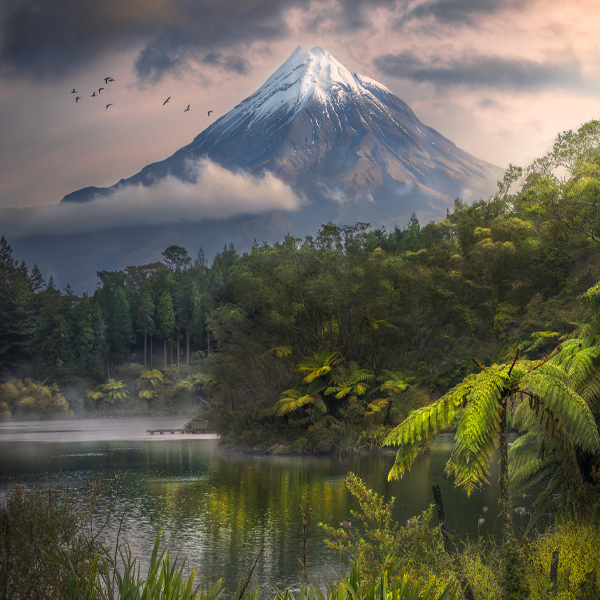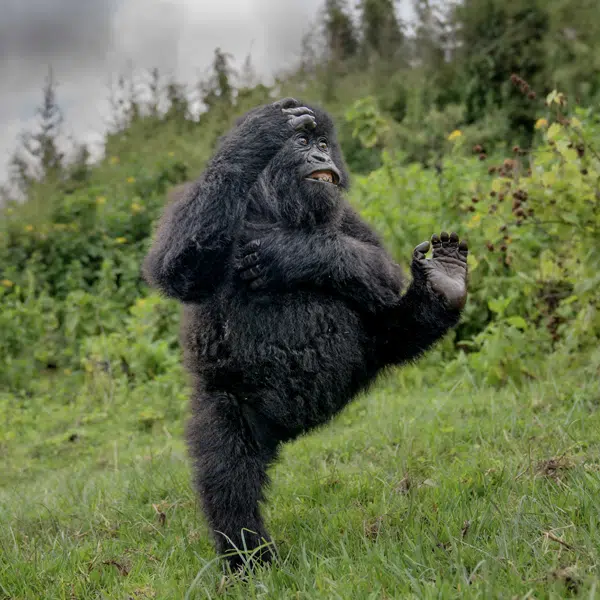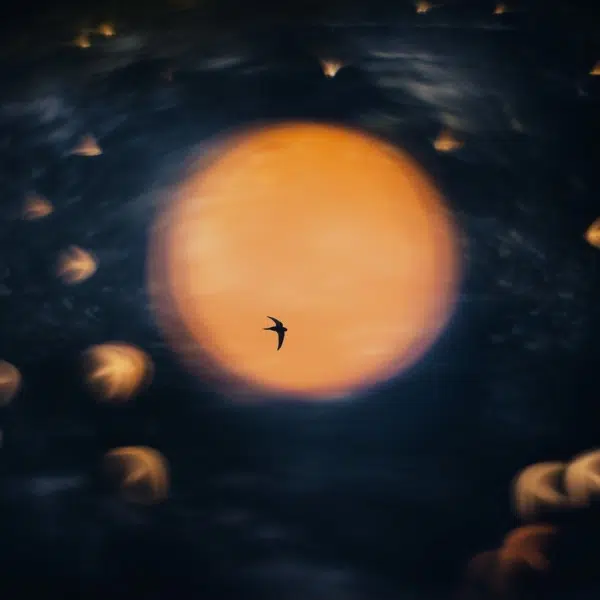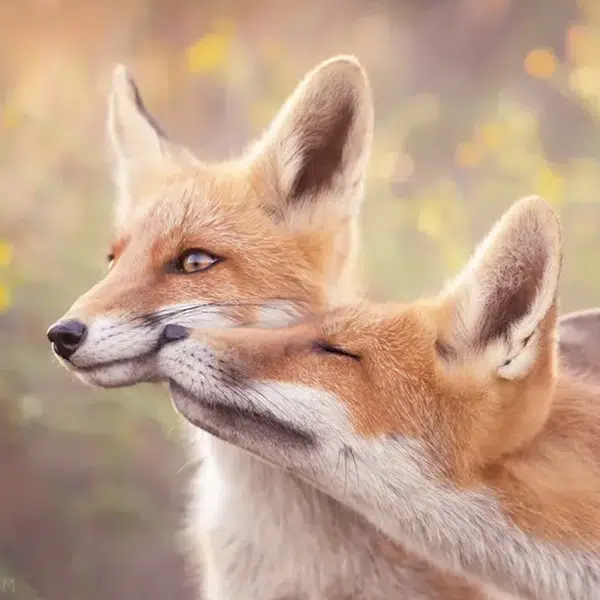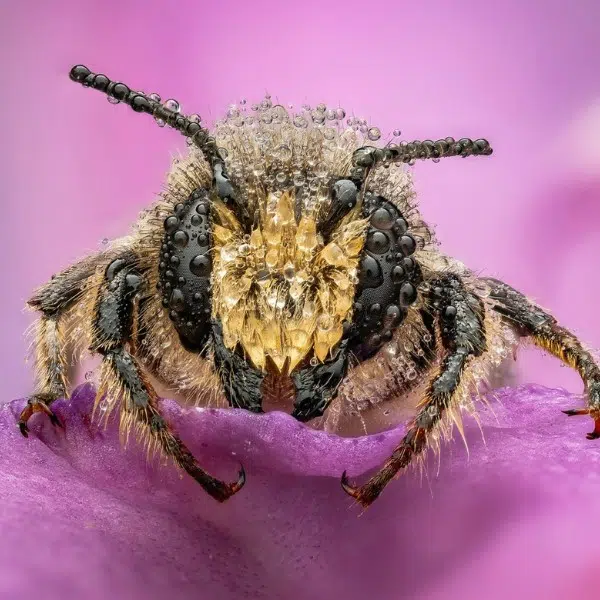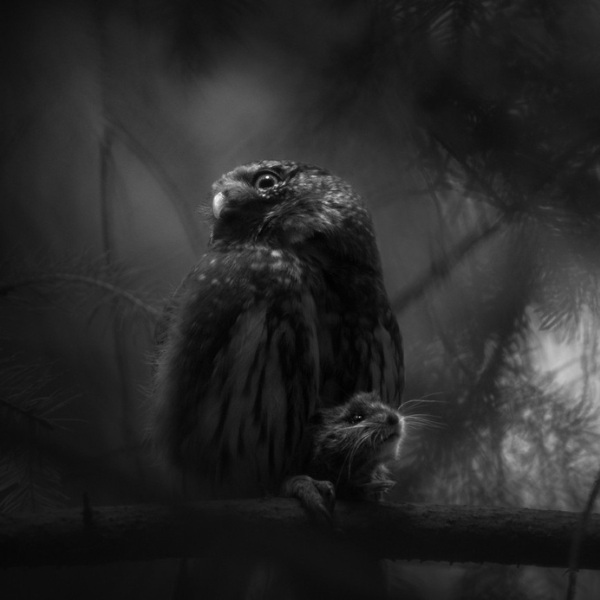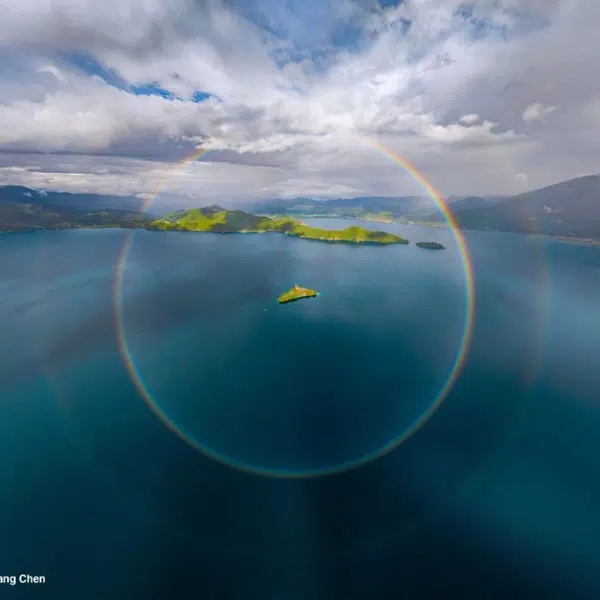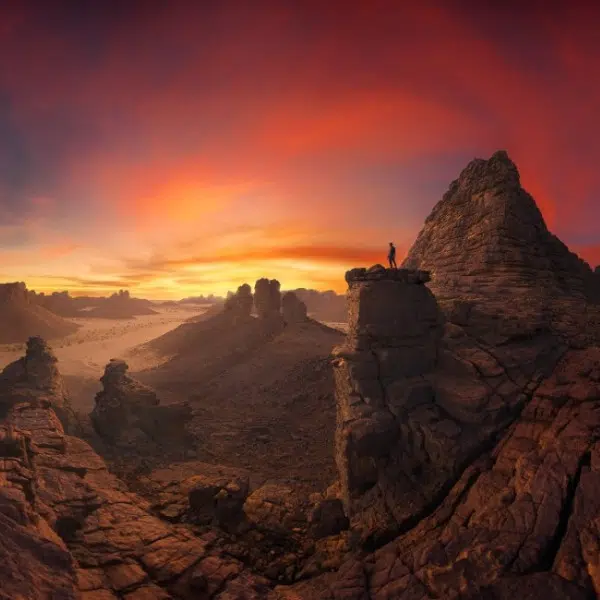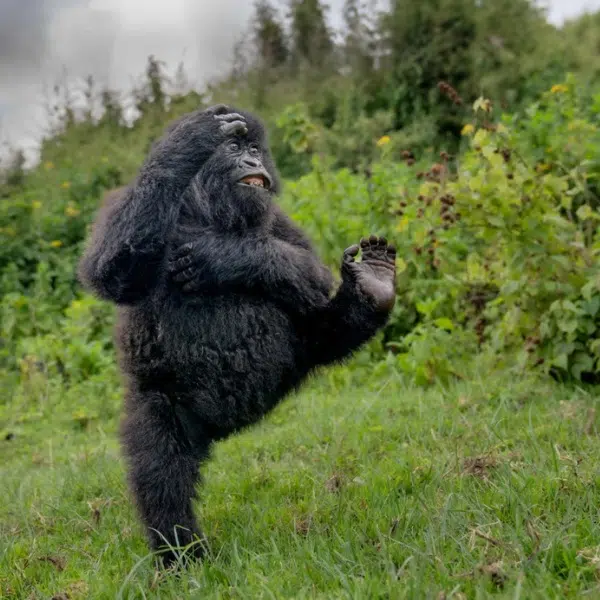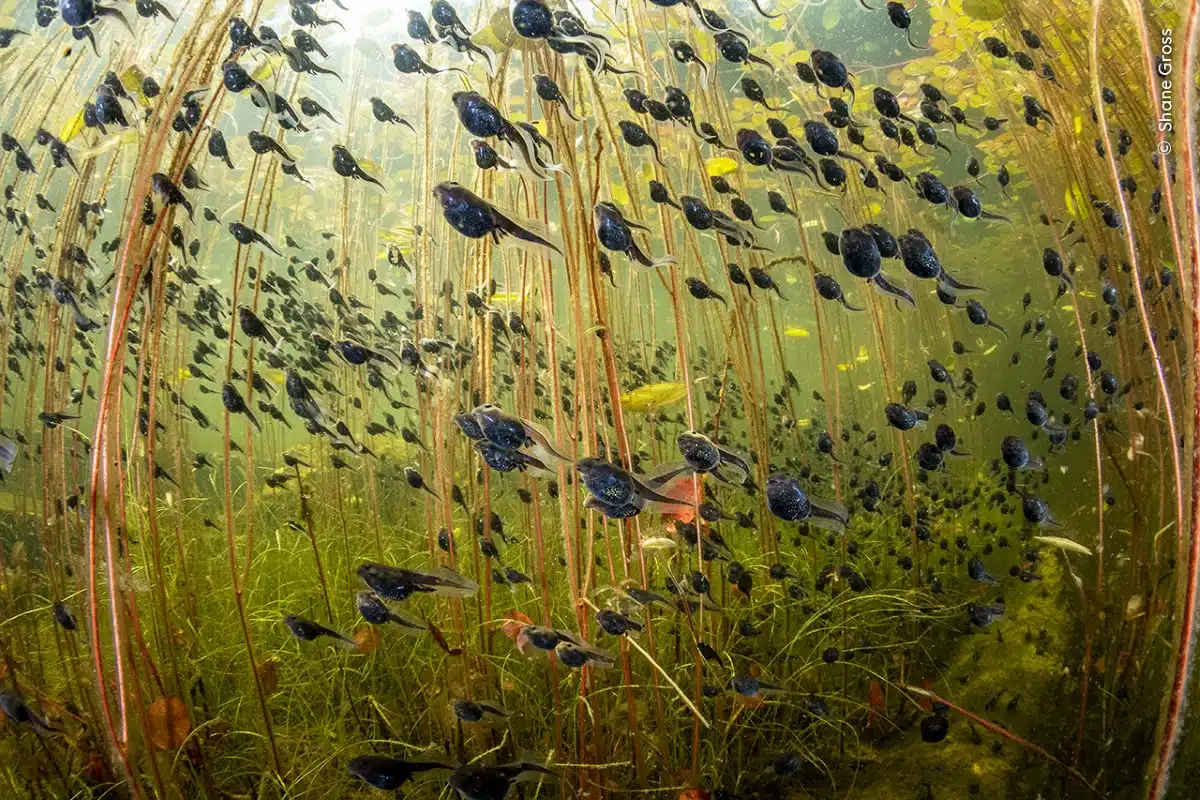
“The Swarm of Life” by Shane Gross, Canada. Wildlife Photographer of the Year and Winner, Wetlands: The Bigger Picture
“Shane Gross looks under the surface layer of lily pads as a mass of western toad tadpoles swim past. Shane snorkeled in the lake for several hours, through carpets of lily pads. This prevented any disturbance of the fine layers of silt and algae covering the lake bottom, which would have reduced visibility. Western toad tadpoles swim up from the safer depths of the lake, dodging predators and trying to reach the shallows, where they can feed. The tadpoles start becoming toads between four and 12 weeks after hatching. An estimated 99% will not survive to adulthood.”
A picture of an enormous swarm of tadpoles swimming below a lily pad has earned Shane Gross the title of Wildlife Photographer of the Year in the Natural History Museum's prestigious photo competition. The Canadian marine conservation photojournalist spent hours snorkeling in a lake on Vancouver Island to capture The Swarm of Life. His efforts paid off, as his image beat out a record-breaking 59,228 entries from 117 countries and territories to capture the title.
“The jury was captivated by the mix of light, energy, and connectivity between the environment and the tadpoles,” shares jury chair Kathy Moran. “We were equally excited by the addition of a new species to the Wildlife Photographer of the Year archive. Over the last few years, the competition has highlighted environments and species that are often overlooked yet provoke the same wonder and delight when shared as the more typically photographed wildlife and wild places.”
German teenager Alexis Tinker-Tsavalas was named Young Wildlife Photographer of the Year for a fascinating image taken when he decided to flip over a log and was able to capture a tiny springtail next to some slime mold. The focus-stacked image brings these minute creatures to life. While it is difficult to document them, as they jump away quickly, springtails are vital in helping organic matter decompose.
Alongside the overall winners, awards were handed out in 18 different categories. As it is also the 60th anniversary of the Wildlife Photographer of the Year, judges also handed out a new prize to recognize images that tell stories of conservation success. Australian photographer Jannico Kelk won the Adult Impact Award for his striking image of a greater bilby, a small marsupial also referred to as the ninu. This species was near extinction thanks to introduced predators like foxes and cats.
Kelk's photo of the adorable ninu in a fenced reserve at night is a reminder that the species can thrive when measures are taken to keep these predators at bay.
The flagship Wildlife Photographer of the Year exhibition featuring the awarded images will open on October 11, 2024, at the Natural History Museum, London. To honor this special anniversary year, this year, the exhibition will also highlight past Grand Title winners and include photographs, trophies, and camera technology highlights that encapsulate the competition’s 60 years of revealing nature’s stories.
These are the incredible winners of the 2024 Wildlife Photographer of the Year competition.
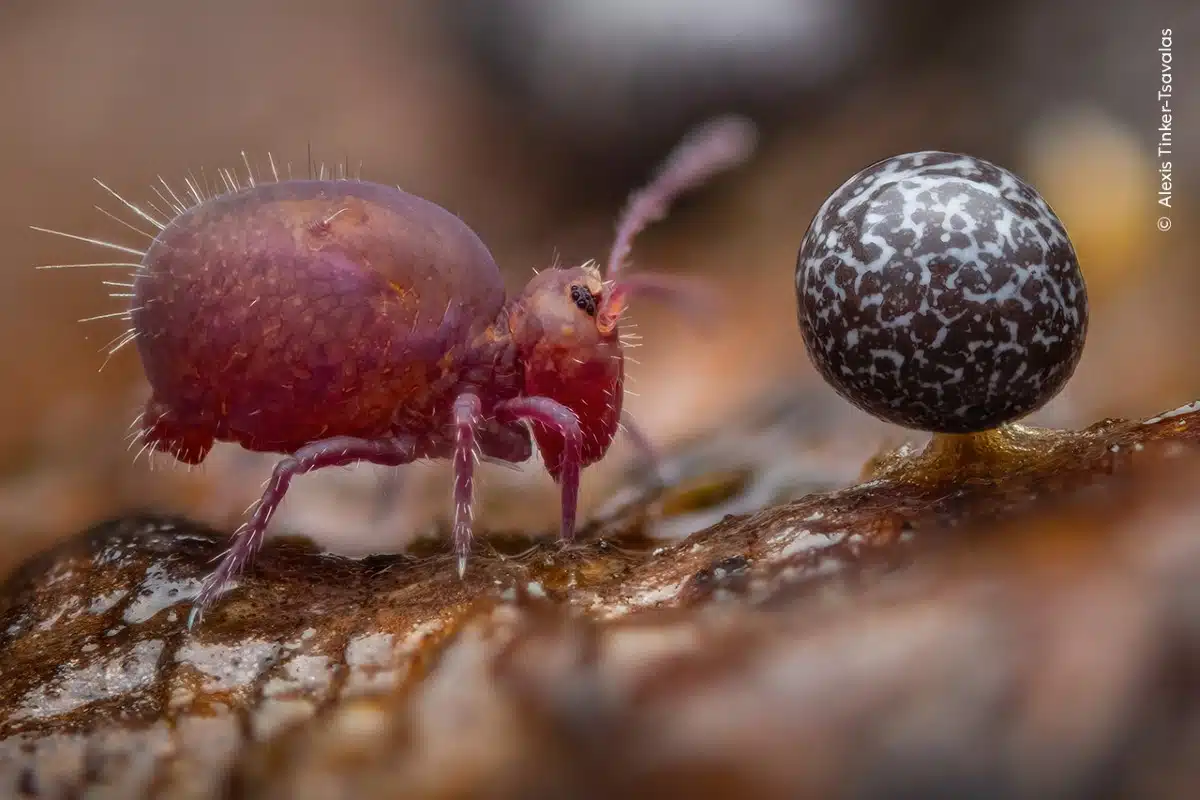
“Life Under Dead Wood” by Alexis Tinker-Tsavalas, Germany. Young
Wildlife Photographer of the Year and Winner, 15-17 Years.
“Alexis Tinker-Tsavalas rolls a log over to see the fruiting bodies of slime mold and a tiny springtail. Alexis worked fast to take this photograph, as springtails can jump many times their body length in a split second. He used a technique called focus stacking, where 36 images, each with a different area in focus, are combined.
Springtails are barely two millimeters long (less than a tenth of an inch). They are found alongside slime molds and leaf litter all over the world. They feed on microorganisms such as bacteria and fungi, improving soil by helping organic matter to decompose.”
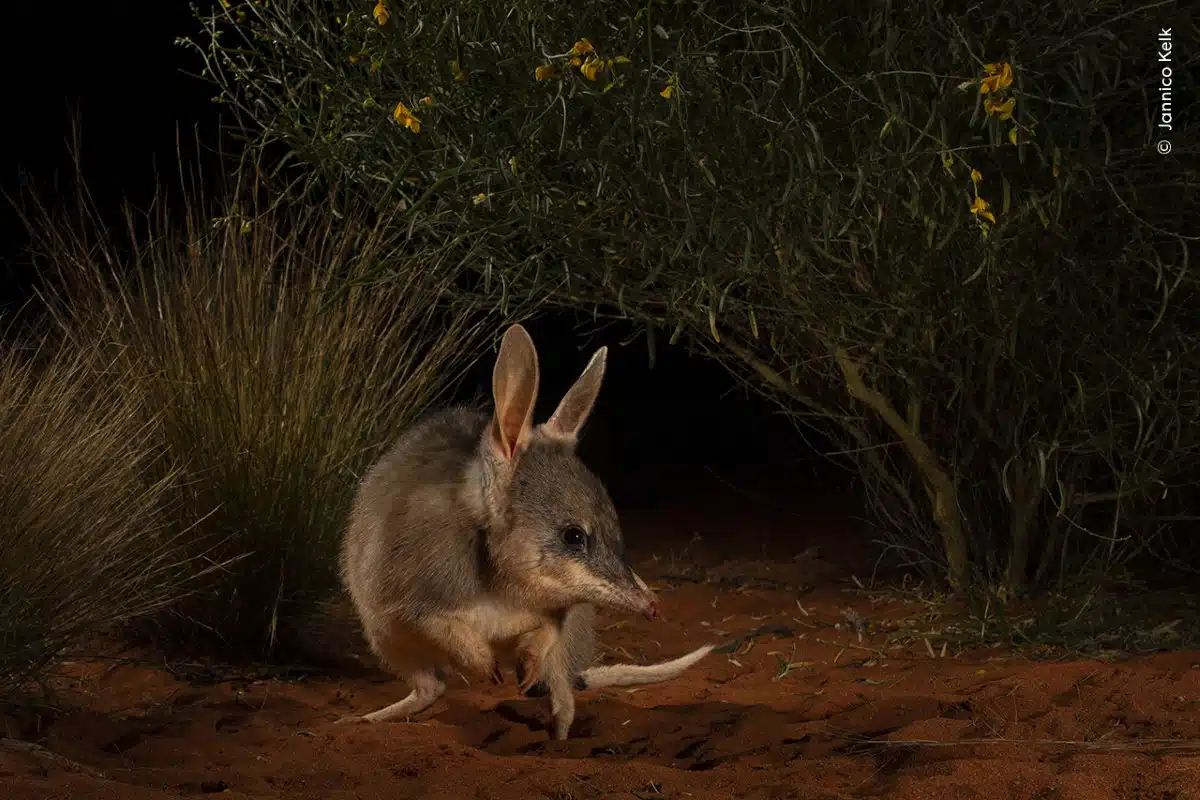
“Hope for the Ninu” by Jannico Kelk, Australia. Winner, Impact Award
“Jannico Kelk illuminates a ninu, with the wire grass and shrubs behind it providing a frame against the darkness. Jannico spent each morning walking the sand dunes of a conservation reserve, searching for footprints that this rabbit-sized marsupial may have left the night before. Finding tracks near a burrow, he set up his camera trap. The greater bilby has many Aboriginal names, including ninu. It was brought to near extinction through predation by introduced foxes and cats. Within fenced reserves where many predators have been eradicated, the bilby is thriving.”
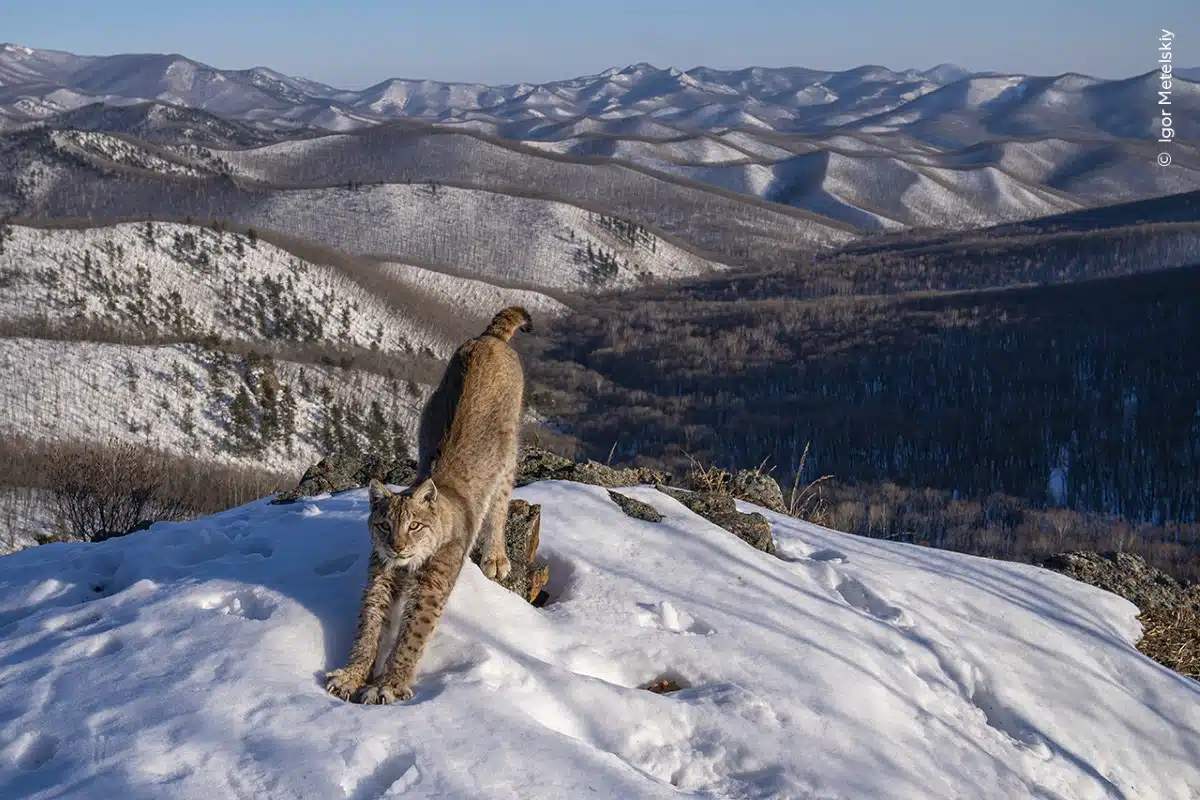
“Frontier of the Lynx” by Igor Metelskiy, Russia. Winner, Animals in their Environment
“Igor Metelskiy shows a lynx stretching in the early evening sunshine, its body mirroring the undulating wilderness. The remote location and changing weather conditions made access to this spot – and transporting equipment there – a challenge. Igor positioned his camera trap near the footprints of potential prey. It took more than six months of waiting to achieve this relaxed image of the elusive lynx. A survey carried out in 2013 estimated the entire Russian lynx population was around 22,500 individuals, with numbers for the Russian Far East, including those in Primorsky Krai, at 5,890.”
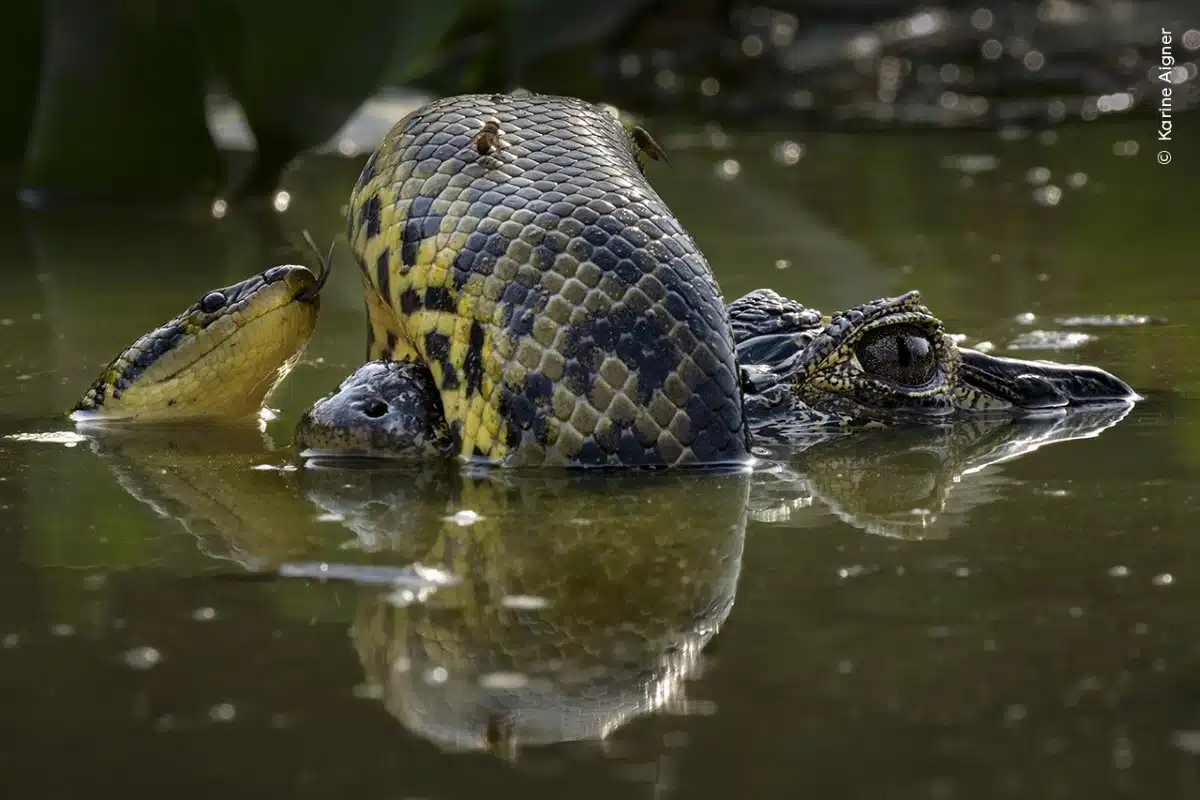
“Wetland Wrestle” by Karine Aigner, USA. Winner, Behavior: Amphibians and Reptiles
“Karine Aigner recognizes the skin of a yellow anaconda as it coils itself around the snout of a yacaré caiman. The tour group Karine was leading had stopped to photograph some marsh deer when she noticed an odd shape floating in the water. Through binoculars, Karine quickly recognized the reptiles and watched as they struggled with each other. Caimans are generalist feeders and will eat snakes. As anacondas get larger, they will include reptiles in their diet. It’s hard to determine who is the aggressor here. On the snake’s back are two tabanids, blood-sucking horseflies that are known to target reptiles.”
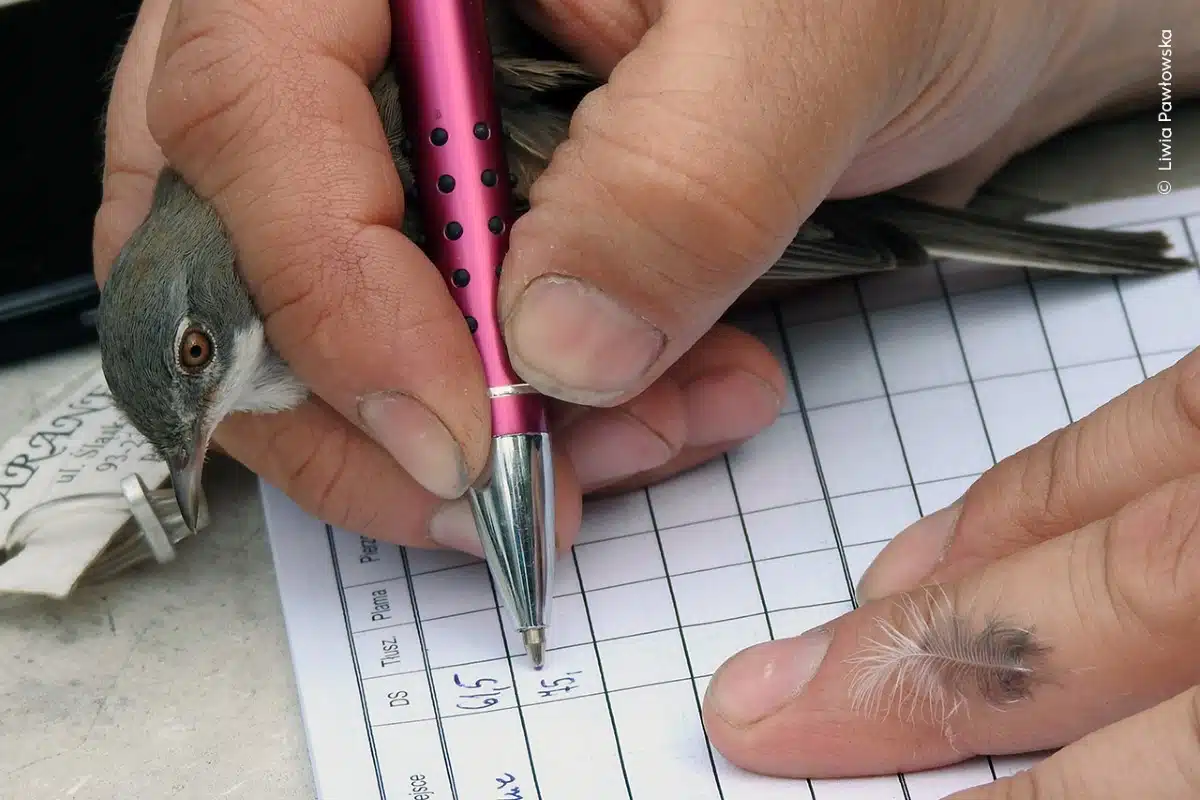
“Recording by Hand” by Liwia Pawłowska, Poland. Winner, Impact Award
“Liwia Pawłowska watches as a relaxed common whitethroat is gently held by a bird ringer. Liwia is fascinated by bird ringing, and has been photographing ringing sessions since she was nine. She says that she hopes her photograph ‘helps others to get to know this topic better.’ Volunteers can assist trained staff at bird-ringing sessions, where a bird’s length, sex, condition and age are recorded. Data collected helps scientists to monitor populations and track migratory patterns, aiding conservation efforts.”
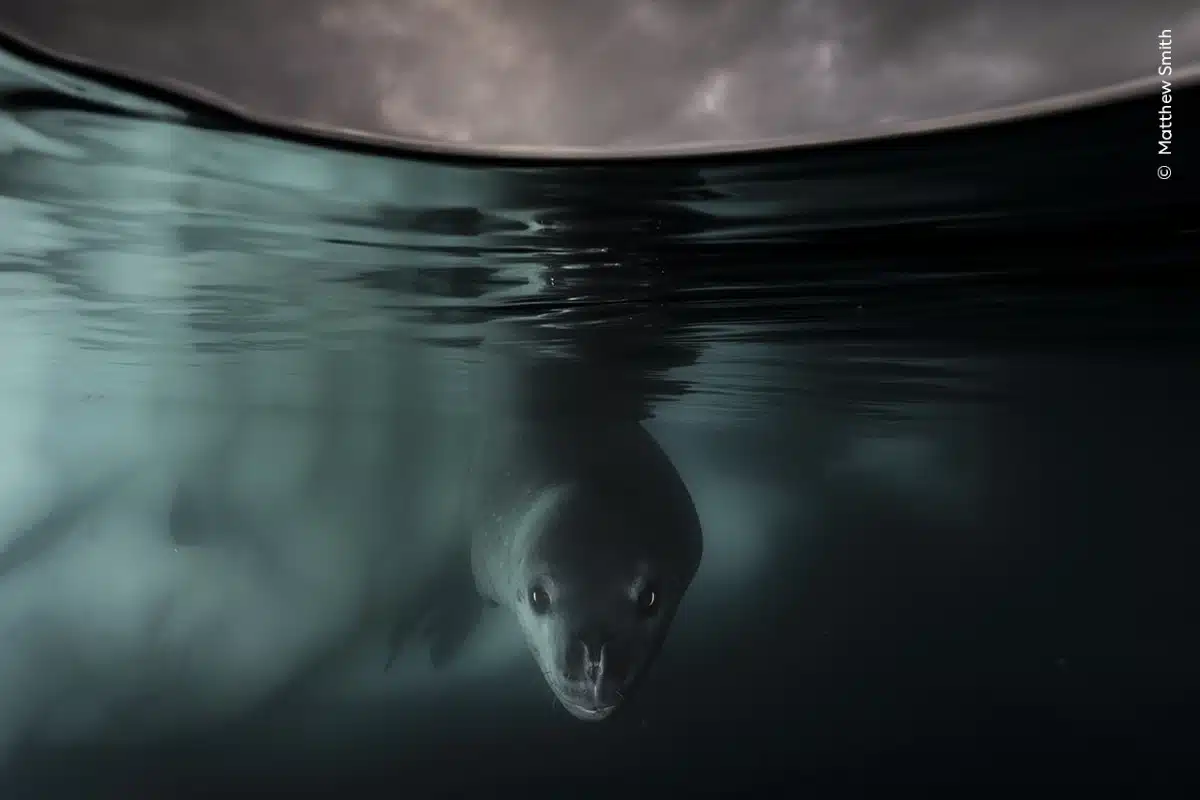
“Under the Waterline” by Matthew Smith, UK/Australia. Winner, Underwater
“Matthew Smith carefully photographs a curious leopard seal beneath the Antarctic ice. Matthew used a specially made extension he designed for the front of his underwater housing to get this split image. It was his first encounter with a leopard seal. The young seal made several close, curious passes. ‘When it looked straight into the lens barrel, I knew I had something good.’ Though leopard seals are widespread and abundant, overfishing, retreating sea ice and warming waters mean that krill and penguins—their main food sources—are both in decline.”
There were a record-breaking 59,228 entries from 117 countries and territories to this year's contest.
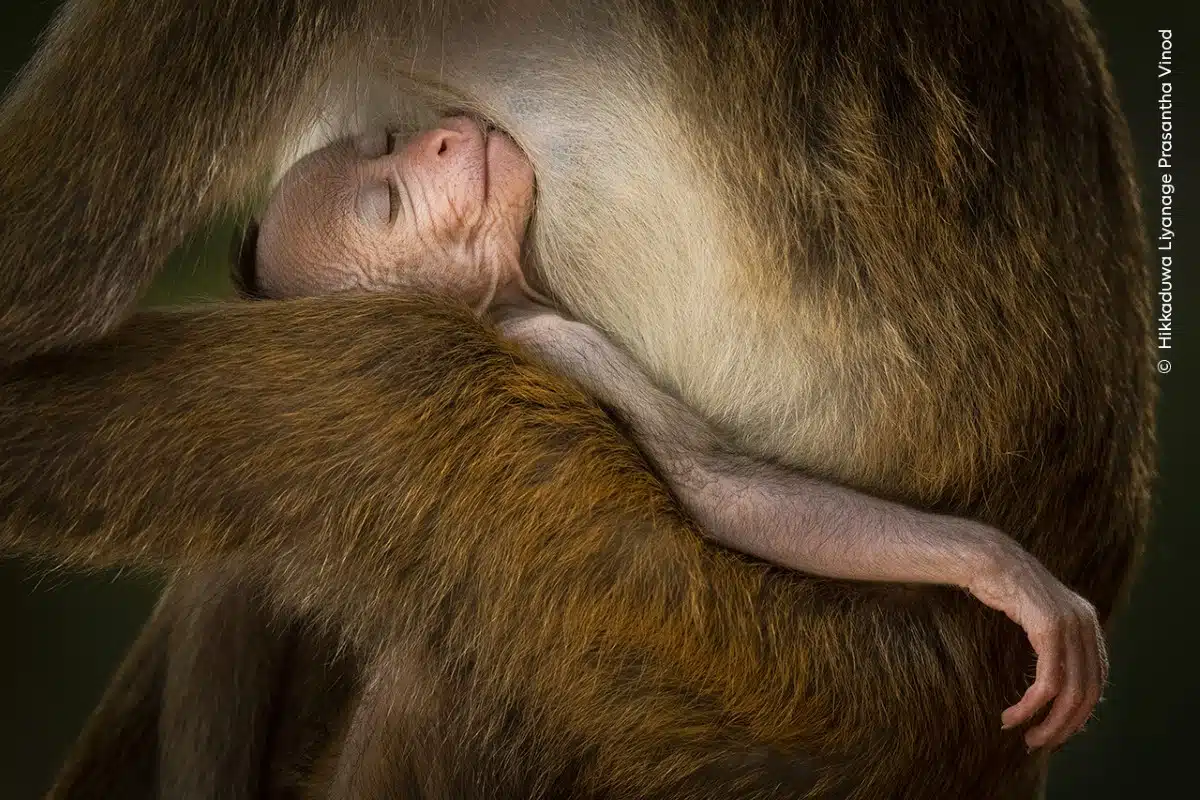
“A Tranquil Moment” by Hikkaduwa Liyanage Prasantha Vinod, Sri Lanka. Winner, Behavior: Mammals
“Hikkaduwa Liyanage Prasantha Vinod finds this serene scene of a young toque macaque sleeping in an adult’s arms. Resting in a quiet place after a morning of photographing birds and leopards, Vinod soon realized he wasn’t alone. A troop of toque macaques was moving through the trees above. Vinod spotted this young monkey sleeping between feeds and used a telephoto lens to frame the peaceful moment. Toque macaques easily adapt to human foods, and the encroachment of plantations into their habitat has seen an increase in incidents of shooting, snaring and poisoning by farmers trying to preserve their crops.”
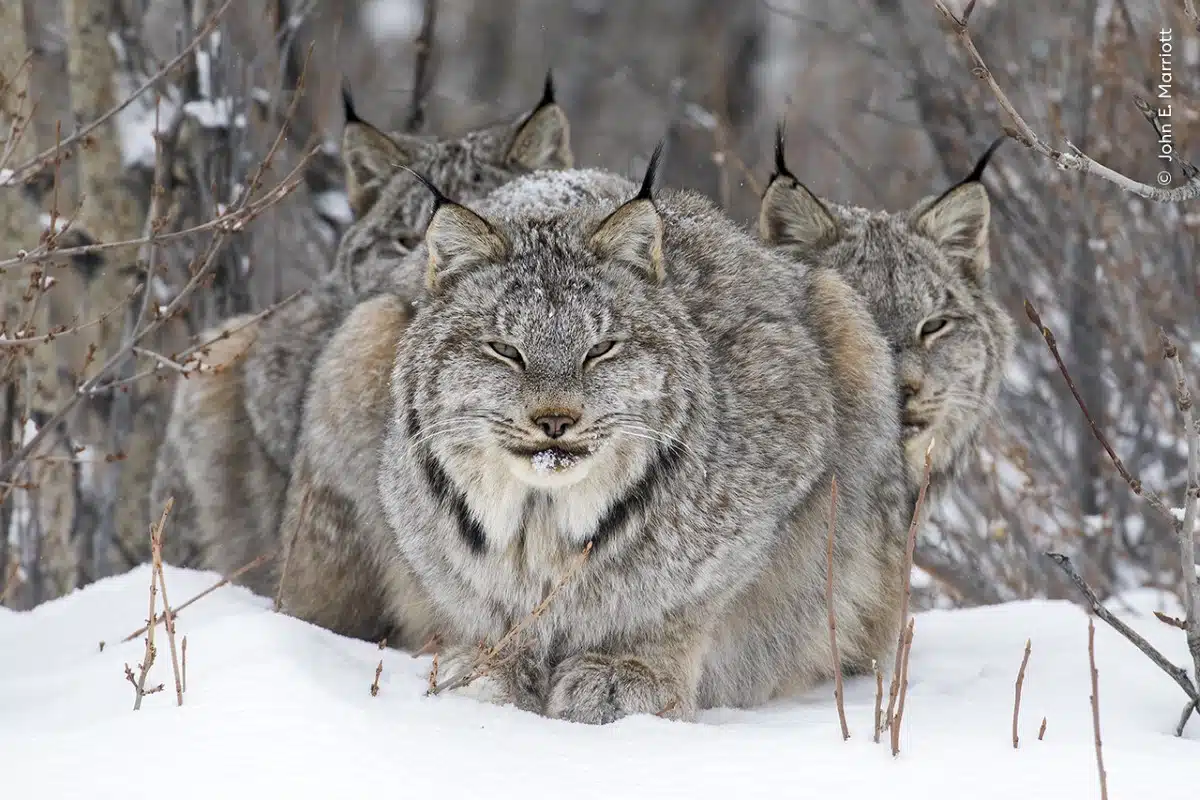
“On Watch” by John E Marriott, Canada. Winner, Animal Portraits
“John E Marriott frames a lynx resting, with its fully grown young sheltering from the cold wind behind it. John had been tracking this family group for almost a week, wearing snowshoes and carrying light camera gear to make his way through snowy forests. When fresh tracks led him to the group, he kept his distance to make sure he didn’t disturb them. Lynx numbers usually reflect the natural population fluctuations of their main prey species, the snowshoe hare. With climate change reducing snow coverage, giving other predators more opportunities to hunt the hares, hare populations may decline, in turn affecting the lynx population.”
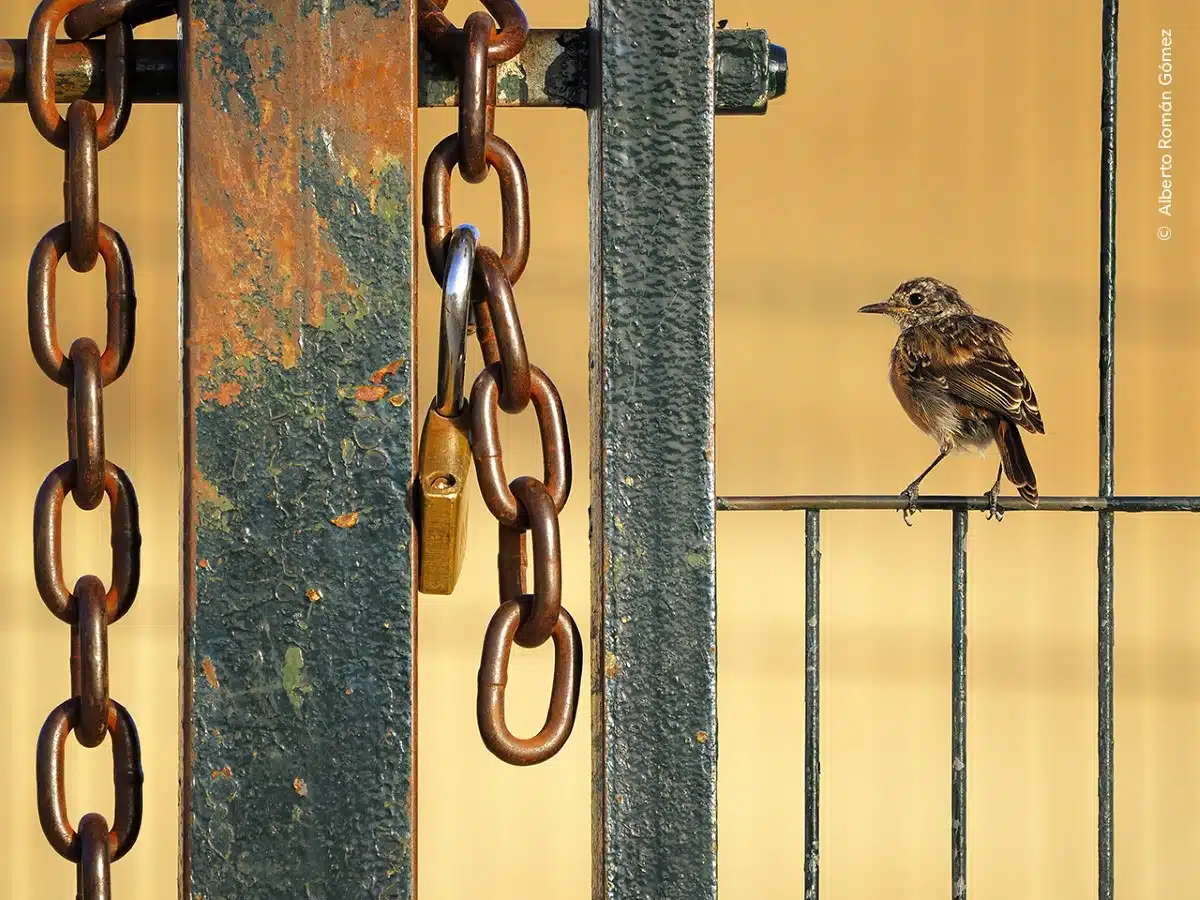
“Free as a Bird” by Alberto Román Gómez, Spain. Winner, 10 Years and Under.
“Alberto Román Gómez contrasts a delicate stonechat bird with a hefty chain.
Watching from the window of his father’s car at the edge of the Sierra de Grazalema Natural Park, Alberto found this young bird tricky to photograph as it was quickly flying back and forth, gathering insects. To Alberto, the stonechat displayed a sense of ownership, as if it were a young guardian overseeing its territory.
This young bird has not yet developed its adult call, which sounds like two stones tapped together. Stonechats tend to prefer open habitats and typically perch on fences.”
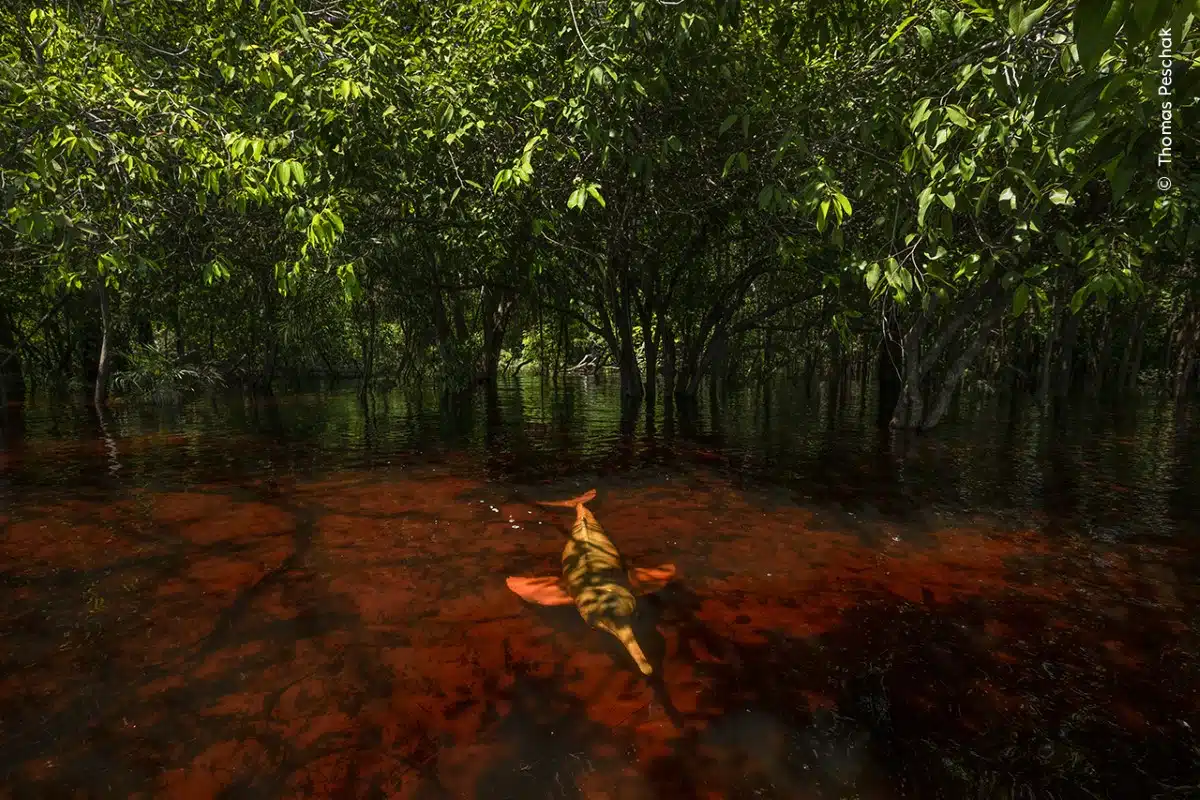
“Among the Trees” from Dolphins of the Forest by Thomas Peschak, Germany/South Africa. Winner, Photojournalist Story Award
“Thomas Peschak documents the relationship between endangered Amazon river dolphins, also known as botos or pink river dolphins, and the people with whom they share their watery home. The Amazon river dolphin is one of two freshwater dolphin species living in the Amazon and Orinoco basins. Only this species has evolved to explore the seasonally flooded forest habitat. The Amazon river dolphin’s relationship with humans is complex. Traditional Amazonian beliefs hold that the dolphins can take on human form, and they are both revered and feared. Others see them as thieves who steal fish from nets and should be killed. Thomas took these images in areas where local communities are creating opportunities for tourists to encounter the dolphins. This brings another set of problems: when they’re fed by humans, the dolphins become unhealthy and younger individuals don’t learn to hunt for themselves.”
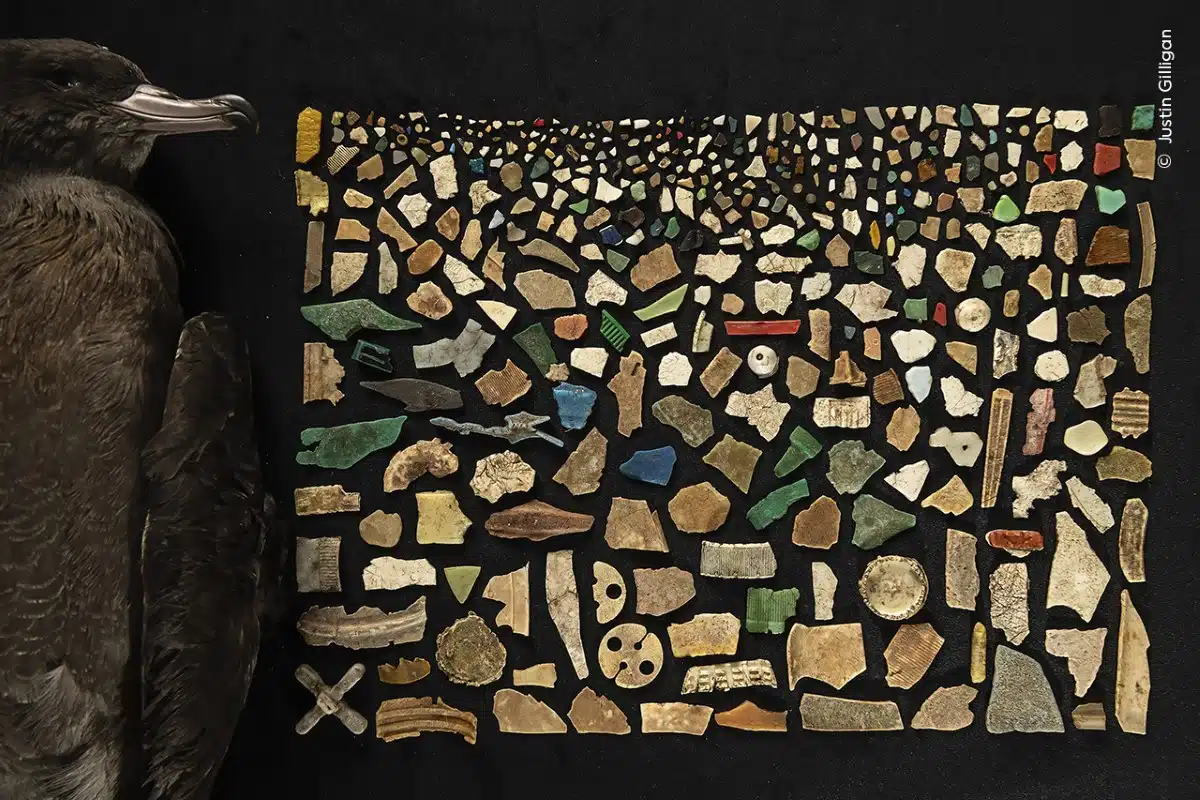
“A Diet of Deadly Plastic” by Justin Gilligan, Australia. Winner, Oceans: The Bigger Picture
“Justin Gilligan (Australia) creates a mosaic from the 403 pieces of plastic found inside the digestive tract of a dead flesh-footed shearwater. Justin has been documenting Adrift Lab’s work for several years, often joining them on beach walks at dawn to collect dead chicks. The team brings together biologists from around the world to study the impact of plastic pollution on marine ecosystems. Studies found that three quarters of adult flesh-footed shearwaters breeding on Lord Howe Island – and 100% of fledglings – contained plastic. The team, including a Natural History Museum scientist, discovered it causes scarring to the lining of the digestive tract, a condition called plasticosis.”
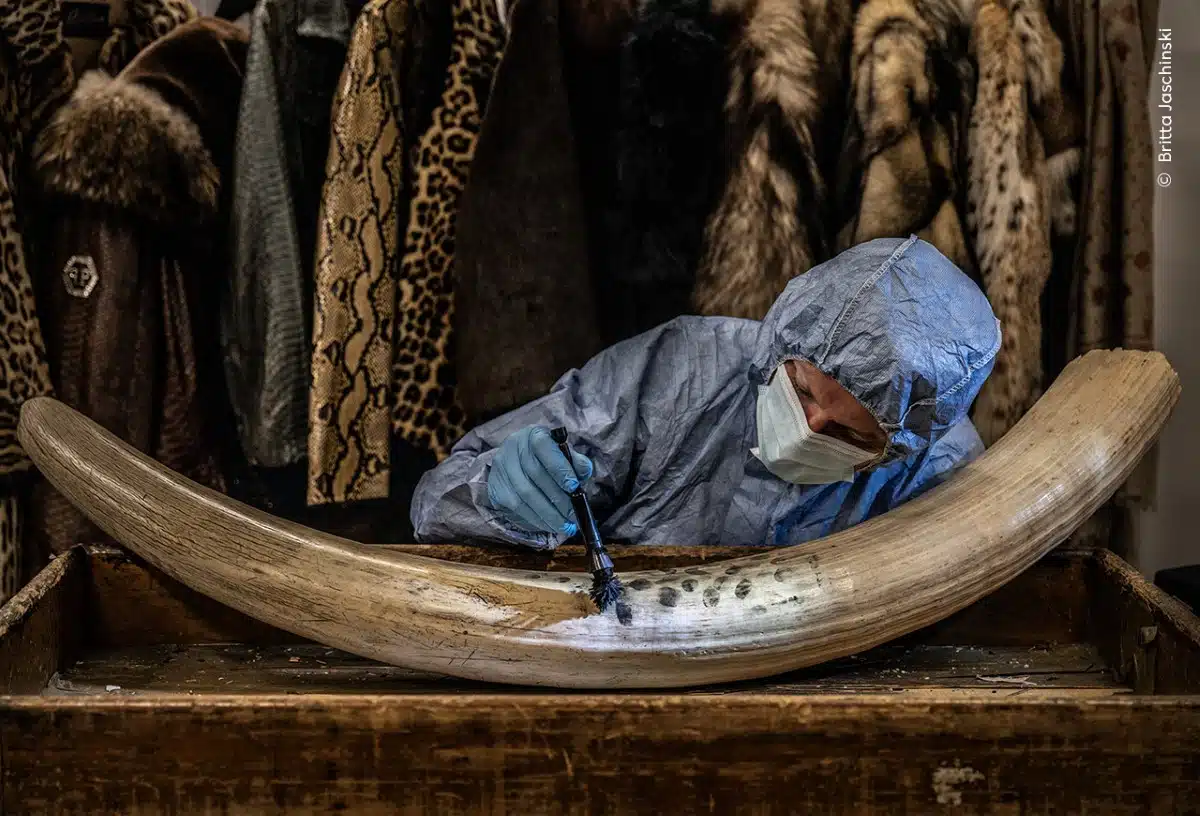
“Dusting for New Evidence” by Britta Jaschinski, Germany/UK. Winner, Photojournalism
“Britta Jaschinski looks on as a crime scene investigator from London’s Metropolitan Police dusts for prints on a confiscated tusk. Britta spent time at the CITES Border Force department where confiscated animal products are tested. Newly developed magnetic powder allows experts to obtain fingerprints from ivory up to 28 days after it was touched, increasing the chances of identifying those involved in its illegal trade. The International Fund for Animal Welfare has distributed more than 200 specially created kits to border forces from 40 countries. They have been instrumental in four cases that resulted in 15 arrests.”
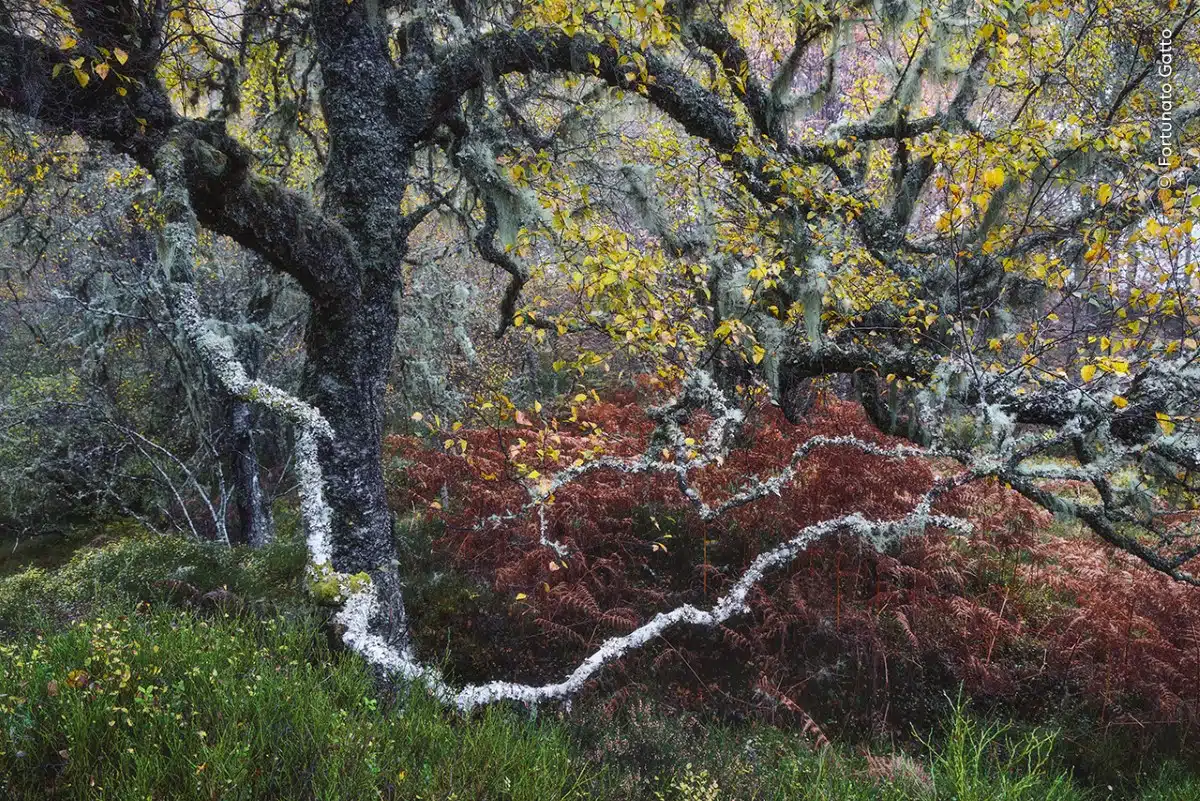
“Old Man of the Glen” by Fortunato Gatto, Italy. Winner, Plants and Fungi
“Fortunato Gatto comes across a gnarled old birch tree adorned with pale ‘old man’s beard’ lichens. Fortunato often visits the Glen Affric ancient pinewoods alone to lose himself in its intricate, chaotic, timeless beauty. The pale ‘old man’s beard’ lichens indicate that it’s an area of minimal air pollution. Glen Affric is home to the highest concentration of native trees in the UK, making it a vital ecosystem. Analysis of pollen preserved in the layered sediments shows that the forest has stood here for at least 8,300 years.”
The prestigious photo contest is celebrating its 60th anniversary this year.
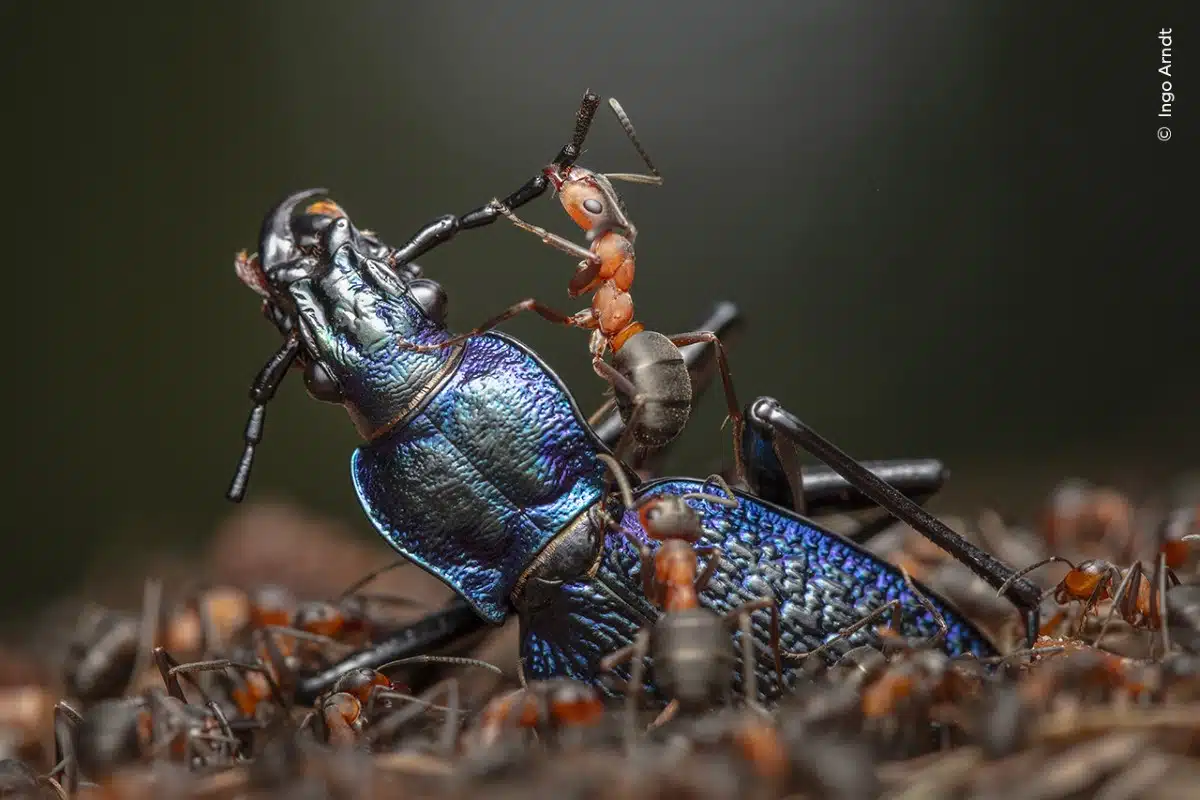
“The Demolition Squad” by Ingo Arndt, Germany. Winner, Behavior: Invertebrates
“Ingo Arndt documents the efficient dismemberment of a blue ground beetle by red wood ants. ‘Full of ant’ is how Ingo described himself after lying next to the ants’ nest for just a few minutes. Ingo watched as the red wood ants carved an already dead beetle into pieces small enough to fit through the entrance to their nest. Much of the red wood ants’ nourishment comes from honeydew secreted by aphids, but they also need protein. They are capable of killing insects and other invertebrates much larger than themselves through sheer strength in numbers.”
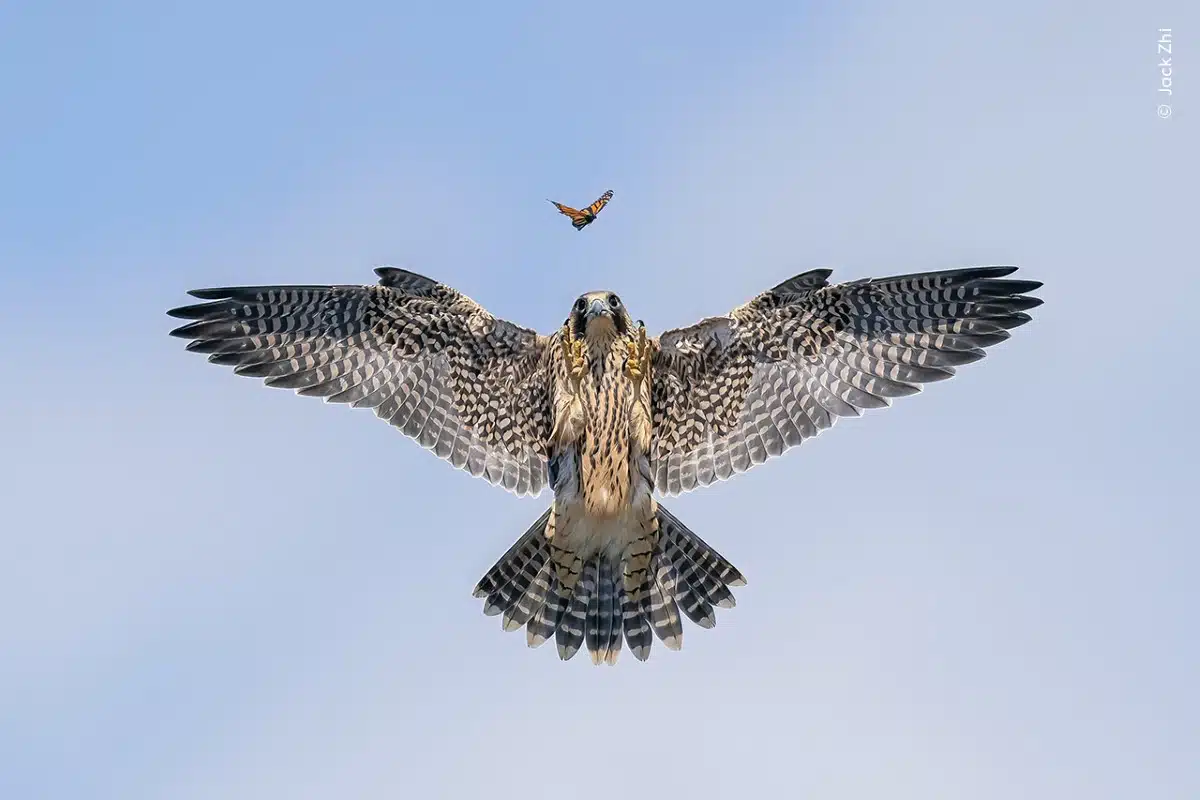
“Practice Makes Perfect” by Jack Zhi, USA. Winner, Behavior: Birds
“Jack Zhi enjoys watching a young falcon practicing its hunting skills on a butterfly, above its sea-cliff nest. Jack has been visiting this area for the past eight years, observing the constant presence of one of the birds and photographing the chicks. On this day it was a challenge to track the action because the birds were so fast. Should this young peregrine falcon make it to adulthood, tests have shown it will be capable of stooping, or dropping down on its prey from above, at speeds of more than 300 kilometers per hour (186 miles per hour).”
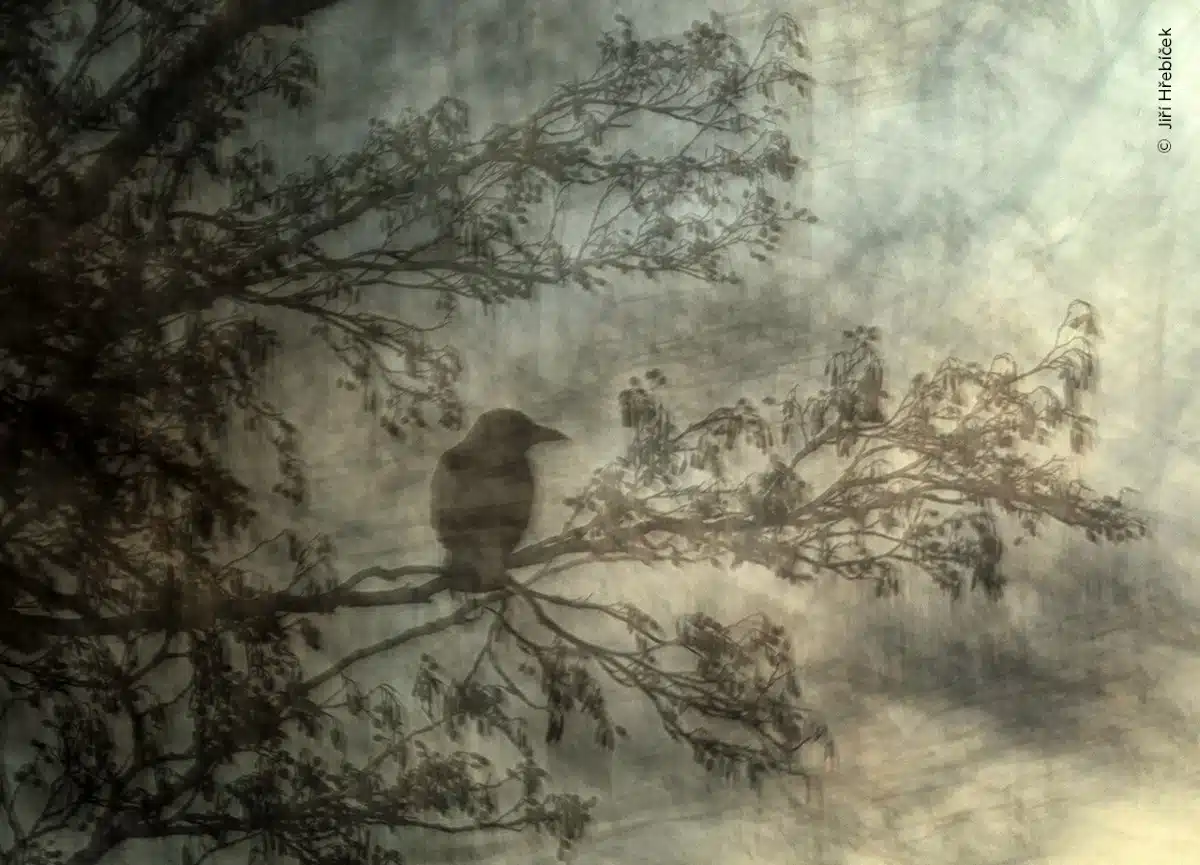
“The Artful Crow” by Jiří Hřebíček, Czech Republic. Winner, Natural Artistry
“Jiří Hřebíček creates an impressionistic vision of this perching carrion crow. Jiří often visits his local park in Basel as it’s an ideal place to experiment with camera techniques. To create this painterly effect of a sitting carrion crow, Jiří deliberately moved his camera in different directions while using a long shutter speed. Carrion crows are intelligent birds that have successfully adapted to living alongside humans, with gardens and parks providing a regular food supply. In Switzerland they are found north of the Alps, with some of the highest concentrations around Basel.”
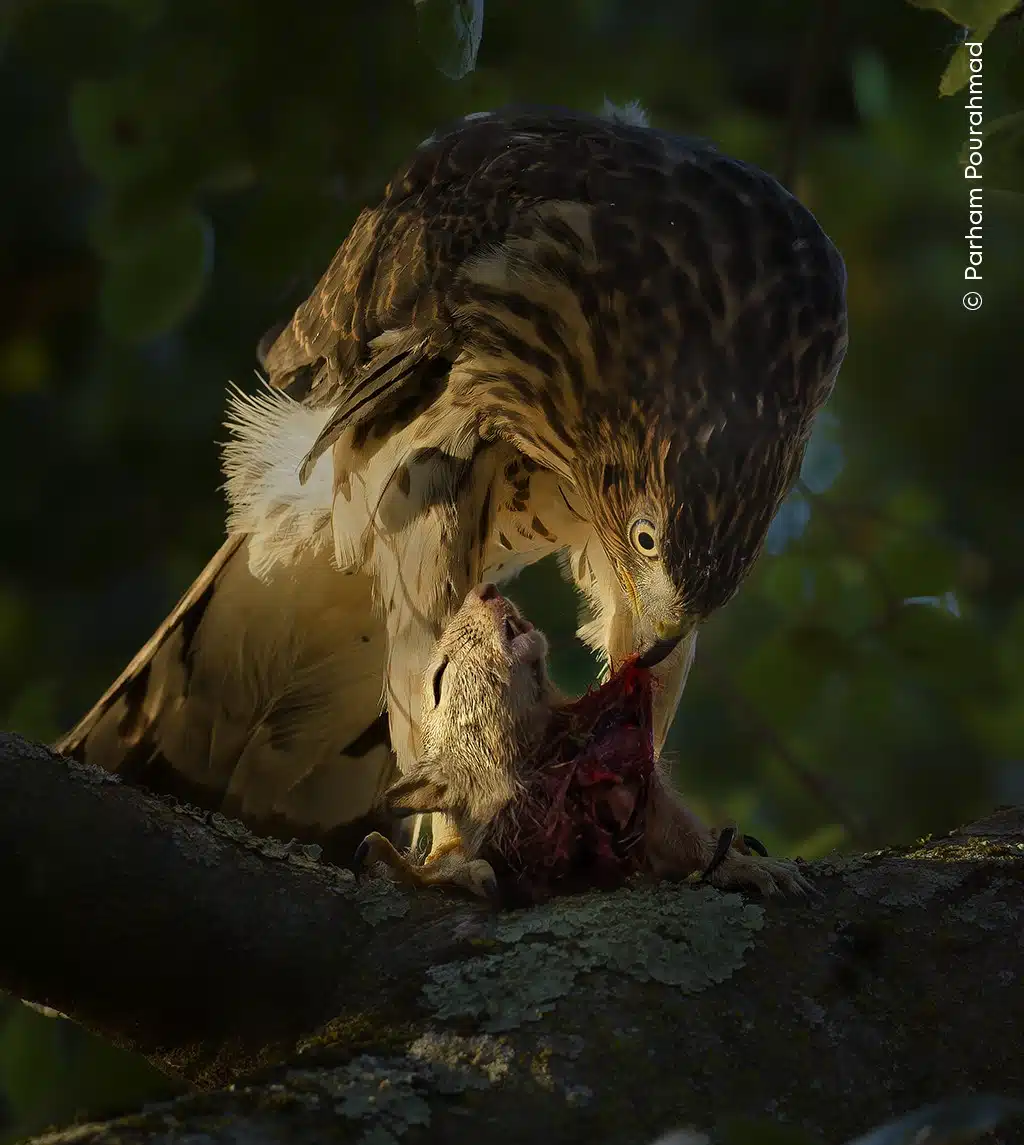
“An Evening Meal” by Parham Pourahmad, USA. Winner, 11-14 Years
“Parham Pourahmad watches as the last rays of the setting sun illuminate a young Cooper’s hawk eating a squirrel. Over a single summer, Parham visited Ed R Levin County Park most weekends to take photographs. He wanted to showcase the variety of wildlife living within a busy metropolitan city, and to illustrate that ‘nature will always be wild and unpredictable’. The Cooper’s hawk is a common species across southern Canada, the USA, and central Mexico, where it inhabits mature and open woodlands. These adaptable birds also live in urban spaces, where there are tall trees to nest in, and bird feeders that attract smaller birds, which they can prey on.”
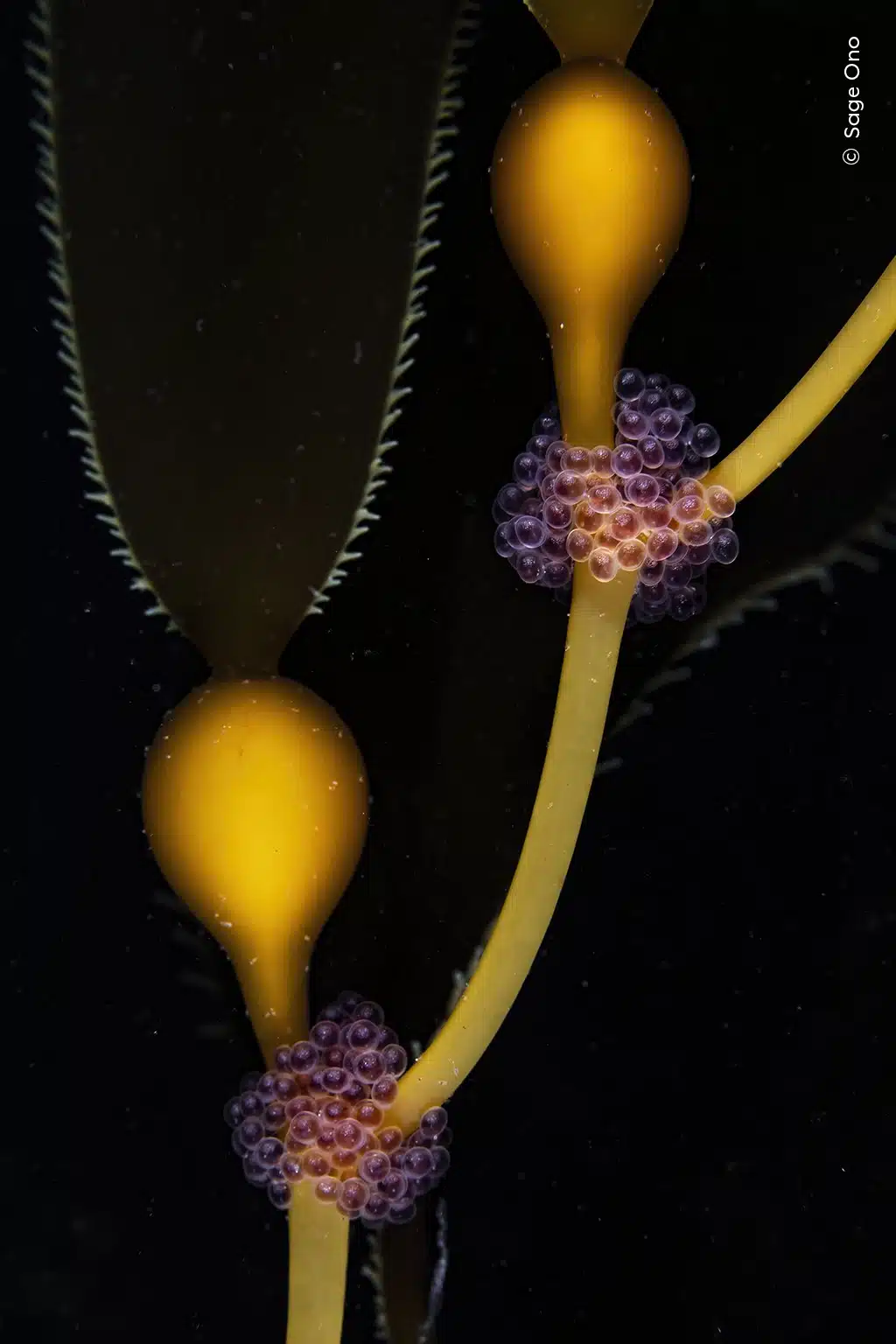
“Rubies and Gold” from The Serengeti of the Sea by Sage Ono, USA. Winner, Rising Star Portfolio Award
“Sage Ono explores the abundant life around the giant kelp forests in Monterey Bay National Marine Sanctuary. These tube-snout fish eggs will fade in color as the embryos develop. But for now, they sparkle like gems next to the kelp’s gold, glowing, gas-filled buoyancy aids. The green serrated edges of the kelp fronds complete the simple composition.”
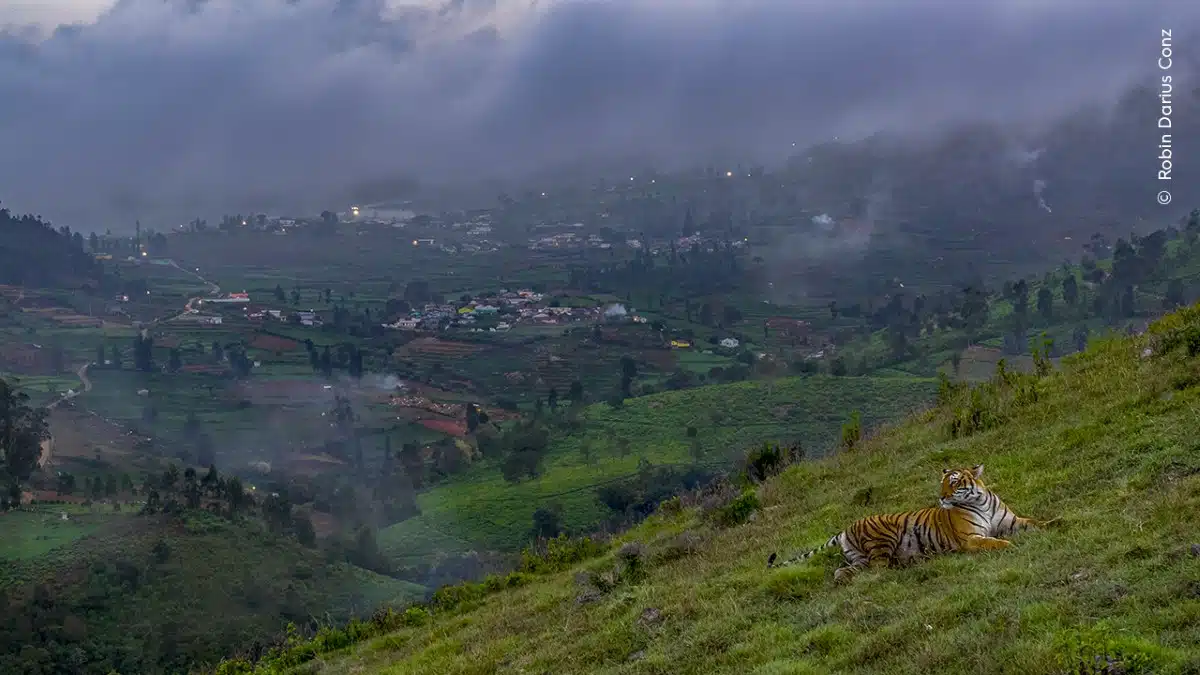
“Tiger in Town” by Robin Darius Conz, Germany. Winner, Urban Wildlife
“Robin Darius Conz watches a tiger on a hillside against the backdrop of a town where forests once grew. Robin was following this tiger as part of a documentary team filming the wildlife of the Western Ghats. On this day, he used a drone to watch the tiger explore its territory before it settled in this spot. The protected areas in the Western Ghats, where tigers are carefully monitored, are some of the most biodiverse landscapes in India and have a stable population of tigers. Outside these areas, where development has created conflict between humans and wildlife, tiger occupancy has declined.”











































































